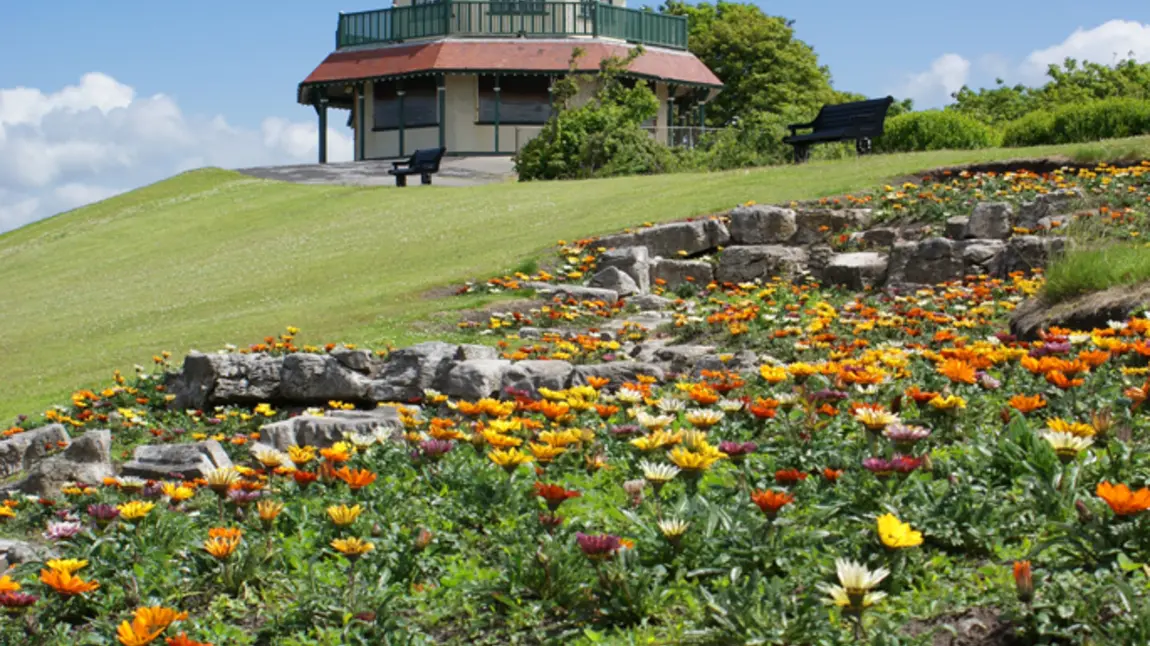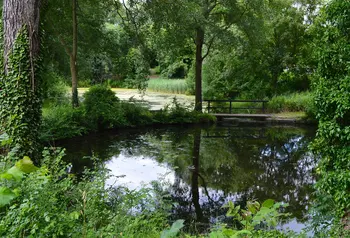Good news for Love Parks Week

Pafiliwn y Mount, Fleetwood, Sir Gaerhirfryn
It’s Love Parks Week and seven country, coastal and urban parks are celebrating a £11.4million National Lottery investment.
They range from expansive country parks spanning over 300 acres to historic urban parks of just 40 acres, plus there’s an elegant Victorian seaside gardens.
All will now be restored, rejuvenated and reimagined following news of National Lottery investment, which is funded jointly by HLF and the Big Lottery Fund.
These important spaces will be sustained for the future by restoring historic features and planting; creating new facilities including play areas, cafes and toilets; and improving habitats for wildlife.
The parks are:
- Durlston Country Park near Swanage is a cliff-top National Nature Reserve (NNR) and one of the UK’s best sites for wildlife. It is located within the Durlston Park Estate, which was developed in the late 19th century by George Burt, who bought land around Durlston Head with the aim of creating a park and housing development. The park was created but the houses were never built
- Aden Country Park in Mintlaw in Aberdeenshire was originally the site of a medieval deer monastery and for more than 200 years, the home and gardens of the Russell family. During the Second World War, it was used as an army barracks. After the war the house was left to fall into ruin. Aberdeenshire Council recognised its value as an area of stunning natural beauty with a wide diversity of architectural features, habitats and woodlands and purchased it in 1974. It was designated a country park the following year
- The Mount Pavilion and its Grade II registered gardens in Fleetwood, Lancashire are a local landmarks. They were designed by the eminent architect and landscape designer Decimus Burton in the 1800s. This funding will enable the pavilion to be restored and brought back into regular use as an education centre, exhibition space and a function room for public events and receptions
- Headstone Manor Park in London spans 23 hectares and is all that remains of the much larger, ancient 'Heggeston' farm, which was first recorded from 1300. Farming continued on the land up until 1928, when it was purchased by the then local authority, Hendon Rural District Council, to create a public park
- Faversham Recreation Ground in Faversham, Kent was established in 1860 by a local solicitor, Henry Wreight, who bequeathed his £70,000 estate. A bandstand was added towards the end of the 19th century, and sporting events began to be held on the rec
- Great Linford Manor Park in Milton Keynes covers an area of 16 hectares and was the grounds of a former manor house. Its landscape includes 17th and 18th-century features including the water gardens and a wilderness garden believed to have been the work of Richard Woods, a contemporary of Capability Brown
- Bailey Hill Park in Mold, Flintshire surrounds the extensive remains of the 11th-century Mold Castle. Built by the Lords of Molsdale, it has an illustrious history: destroyed by Llywelyn ab Iorwerth (Prince of Gwynedd) in 1199 and repaired; it was taken by Dafydd ap Llywelyn (Prince of Wales) in 1245; and reclaimed by Edward I in 1276. It was established as a park in the 1920s by Mold Urban District Council and works at the time included the addition of gates, tennis courts and cenotaph. The Gorsedd Stone Circles were erected in 1923 for the proclamation of Welsh Cultural festival: the National Eisteddfod, which was repeated again in 1990
Regeneration, conservation and enjoyment
Since 1996, more than £950m raised by National Lottery players has been used to support the regeneration, conservation and increased enjoyment of public parks and cemeteries across the UK.
